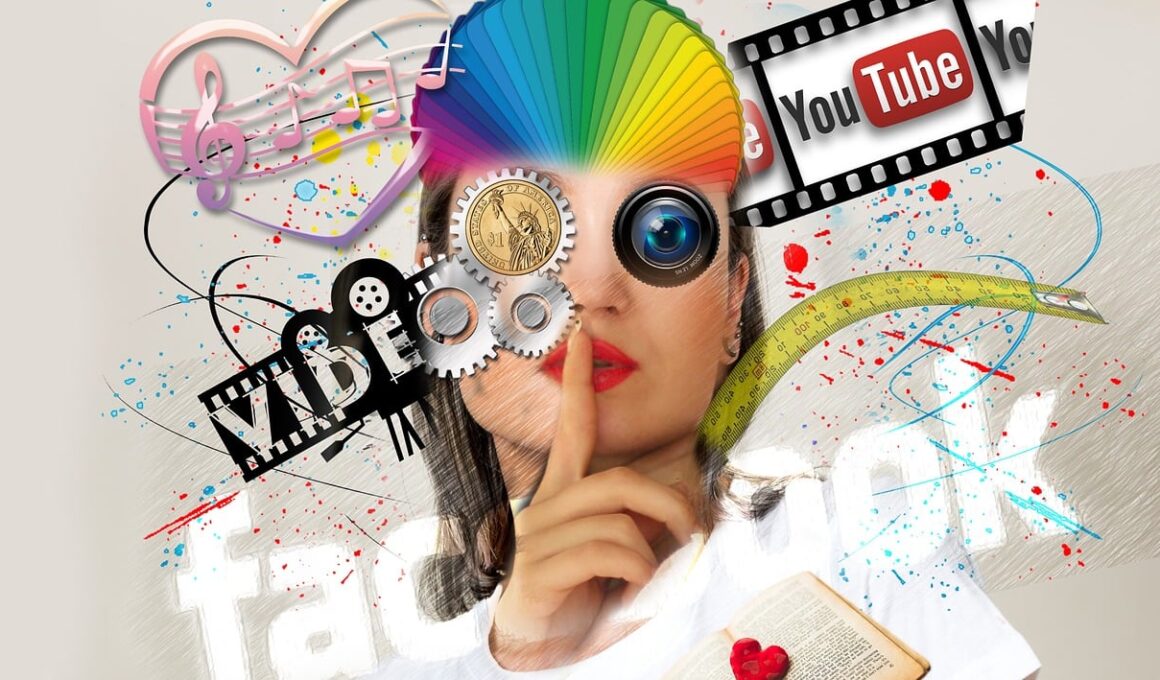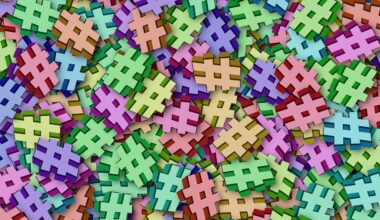Memes as a Powerful Tool in Social Media Branding
In the dynamic realm of social media branding, memes have emerged as an influential tool to engage audiences. They resonate particularly with younger audiences, infusing humor into digital marketing. Brands that utilize memes effectively can enhance their reach and build a dedicated following. Memes allow brands to communicate messages in a relatable and entertaining way. One significant advantage of employing memes is their tendency to go viral. A well-crafted meme has the potential to be shared widely, reaching users far beyond a brand’s existing followers. Engaging in trending memes can also position a brand as culturally relevant. This relevance is crucial in today’s fast-paced digital environment, where consumer preferences shift rapidly. Therefore, businesses should monitor trends and identify appropriate moments to incorporate memes into their marketing strategies. By doing so, they can tap into the emotions and interests of their target audiences. In a landscape dominated by content overload, standing out is vital, and memes offer a unique and effective means for brands to differentiate themselves. As such, brands looking to enhance their social media presence should consider meme culture as a potent avenue for engagement.
Memes have various formats and styles, making them versatile assets in marketing. They can be images, videos, or animations that evoke humor or relatable situations. By integrating different meme structures, brands can tailor their content to appeal to specific demographics. For instance, reaction memes can illustrate customer responses effectively, allowing the audience to connect emotionally. Additionally, meme templates are easily customizable, offering brands the chance to inject their unique voice while still retaining relatability. Memes need to reflect a brand’s identity while also respecting the culture surrounding them. Using memes that are too generic or inappropriate can backfire, leading to potential backlash from audiences. Moreover, brands must tread carefully, as trends shift quickly online, and old memes may not resonate anymore. Staying up to date on cultural movements and internet humor is paramount. Utilizing analytics and audience feedback can help refine a brand’s approach to meme marketing. This iterative process ensures that content remains fresh and engaging. As brands experiment with meme inclusion, maintaining authenticity is essential, as authenticity fosters trust and loyalty among consumers in a digital environment saturated with content.
Incorporating user-generated content through memes can effectively bolster a brand’s social media strategy. User participation fosters community and belonging, crucial for sustained engagement. Inviting users to create and share their memes can amplify brand visibility while also producing original content aimed at other potential followers. Campaigns encouraging this kind of engagement can lead to organic growth within a fanbase. Additionally, brands can create challenges or contests that revolve around meme creation, rewarding creativity and further motivating participation. A curated selection of user-generated memes can also showcase the brand’s commitment to its community. This strategy is not just beneficial for outreach; it also instills a sense of ownership within the user base. Consumers who feel involved in the brand narrative are more likely to become brand advocates. A strong advocate community naturally leads to higher trust levels among new or potential customers. Moreover, featuring user-generated memes reinforces brand loyalty as followers feel valued. This reciprocal relationship between brands and users is an effective way to cultivate long-lasting connections in the ever-changing world of social media marketing.
The Importance of Being Trend-Savvy
In the fast-paced world of social media, being trend-savvy is essential for brands to leverage memes effectively. Successful meme marketing requires an awareness of internet culture, notable events, and trending topics. Brands that embrace relevant trends can ensure their content resonates with current conversations. Participating in these trends displays agility and relevance, increasing the likelihood of user engagement. Platforms like Twitter and TikTok are prime examples of spaces where trends evolve at lightning speed. Understanding the nuances of each platform’s user demographics can assist brands in tailoring their meme content appropriately. Analyzing past successes can also provide insights into which trends align with the brand’s voice and values. Creative agility enables brands to pivot swiftly while maintaining a consistent message. This responsiveness will enhance a brand’s image as dynamic and contemporary. However, timing remains crucial in meme creation; sharing content too late can diminish a meme’s impact. Consistent engagement with social media, staying informed about trending topics, and observing competitors contribute to a comprehensive understanding of how to effectively integrate memes into branding strategies. Ultimately, trend-savvy brands create meaningful connections with audiences, resulting in increased brand loyalty.
The influence of memes extends beyond just humor; they can address social issues and global challenges. Brands can use memes as a medium to showcase their values, raise awareness, or support social causes. This form of engagement can make brands appear more relatable and socially responsible, particularly to younger consumers who prioritize values-based purchasing. For instance, a brand promoting environmental sustainability could adapt popular meme formats to highlight their eco-friendly initiatives. By doing so, they not only engage the audience but also promote their mission and values effectively. When brands align with social movements, it can lead to heightened brand loyalty as consumers appreciate authenticity. However, it’s essential for brands to approach these topics carefully. Missteps can lead to criticism or backlash, particularly if a brand is perceived as utilizing sensitive issues for profit. Transparency and genuine concern for the causes being tackled will resonate better with audiences. This balance is vital; integrating social awareness into meme marketing can cultivate trust. In summary, brands that strike a chord with audiences through meaningful memes stand to benefit significantly, earning respect and loyalty in return.
Measuring Success in Meme Marketing
Evaluating the effectiveness of meme-driven campaigns is crucial for brands aiming to refine their approach. Success metrics must encompass various components, including engagement rates, shares, and conversions. Metrics can reveal how well a message resonates with audiences. Social listening tools allow brands to monitor discussions around their memes and assess audience sentiment. Comprehensive analysis can provide valuable insights for future campaigns and optimization. Additionally, A/B testing can be employed to understand which meme formats perform best. This iterative process helps brands identify which types of content align with their audience’s preferences. Understanding the demographics of engaged users can inform future marketing strategies as well. Furthermore, brands should track the lifespan of their memes. Some memes have a short lifespan, while others may continue to generate engagement long after their release. Brands should be adaptable and willing to refresh or pivot their meme strategies based on audience feedback and performance data. Successful meme marketing necessitates flexibility, creativity, and constant analysis, enabling brands to maintain relevance in a competitive landscape. By continuously evaluating campaigns, brands can stay aligned with their audience and achieve long-term success.
As the digital landscape evolves, staying creative and innovative is critical for brands using memes for marketing. Creativity in meme-making drives engagement and enhances relatability. Brands must differentiate their content to stand out in crowded social media feeds. This requires continuous experimentation with different memes, combining humor with compelling brand narratives. Humor that often features in memes should align with the brand’s identity to create a cohesive messaging strategy. Engaging a brand’s content creators and social media teams can foster creative brainstorming sessions, generating fresh ideas and perspectives. Accessibility is also vital; memes should be created with diverse audiences in mind to ensure inclusivity. Fostering an environment where new ideas can flourish enables brands to keep their content dynamic. Additionally, sourcing inspiration from various platforms and trends can inform a brand’s unique take on memes, widening its reach. Embracing diverse cultural references can deepen connections with varied audiences. Ultimately, creativity and innovation are essential for thriving in the realm of meme marketing. Through established brand narratives and fresh comedic spins, brands can leverage memes to widen their engagement and bolster loyalty.


